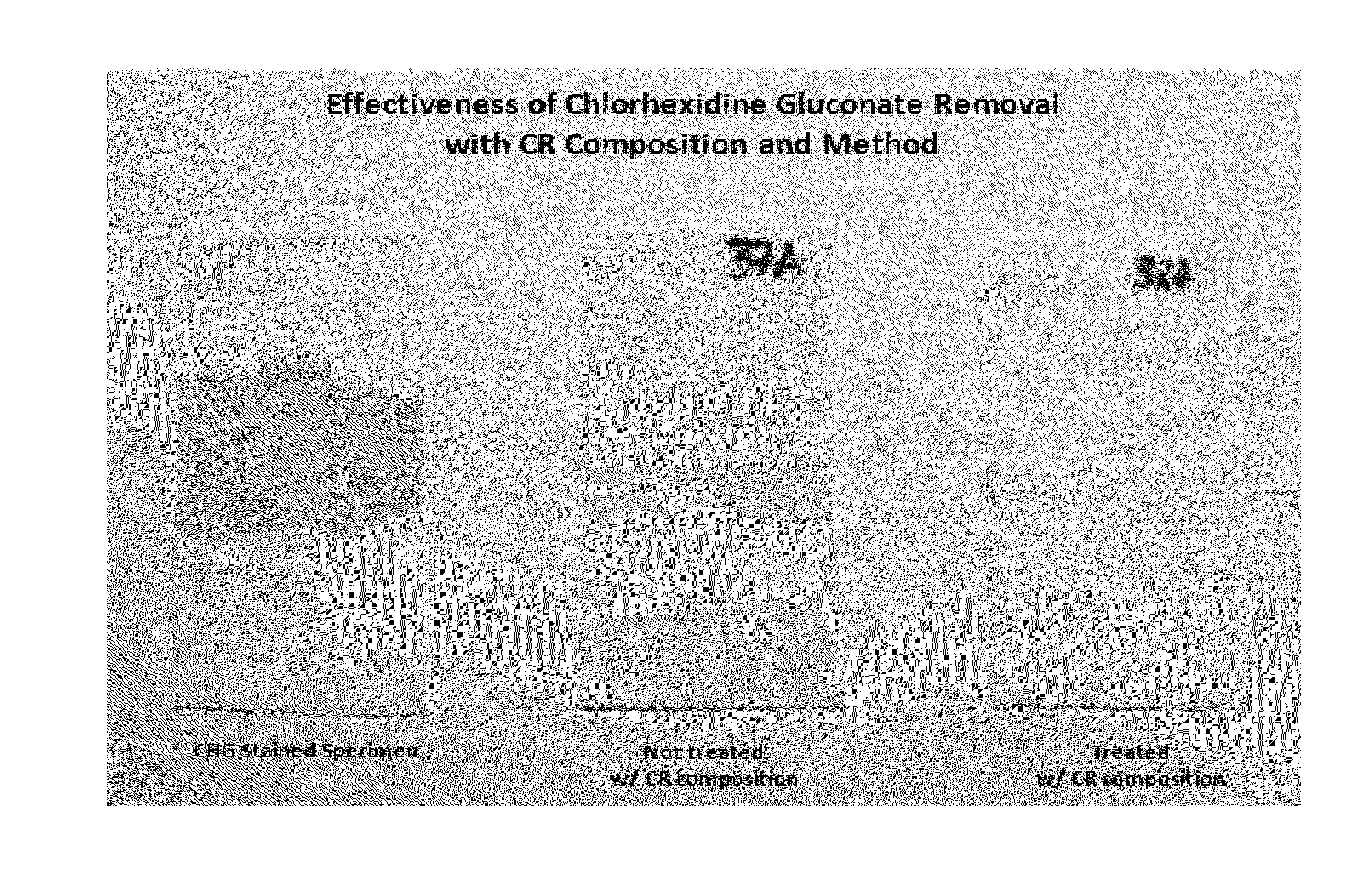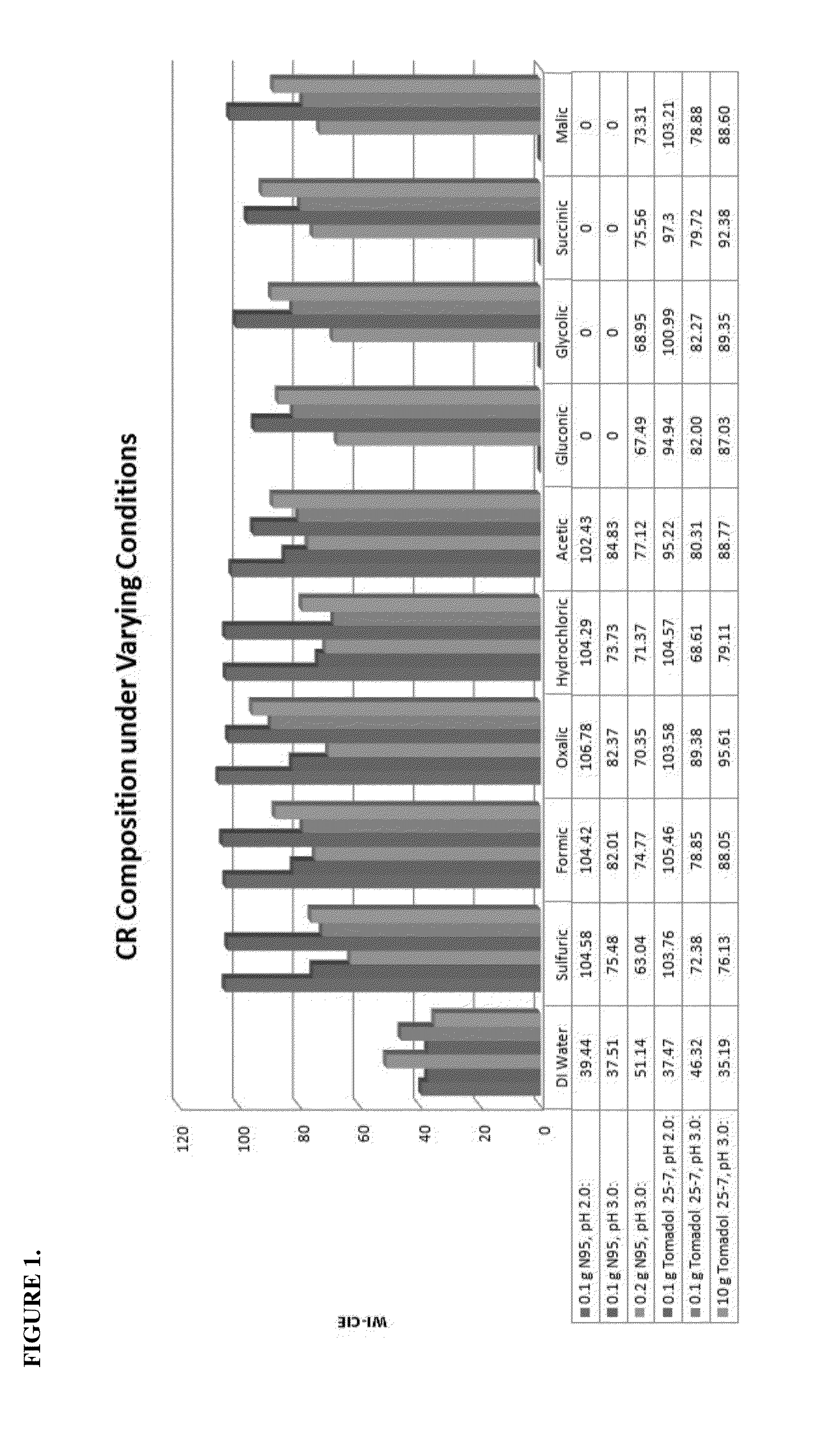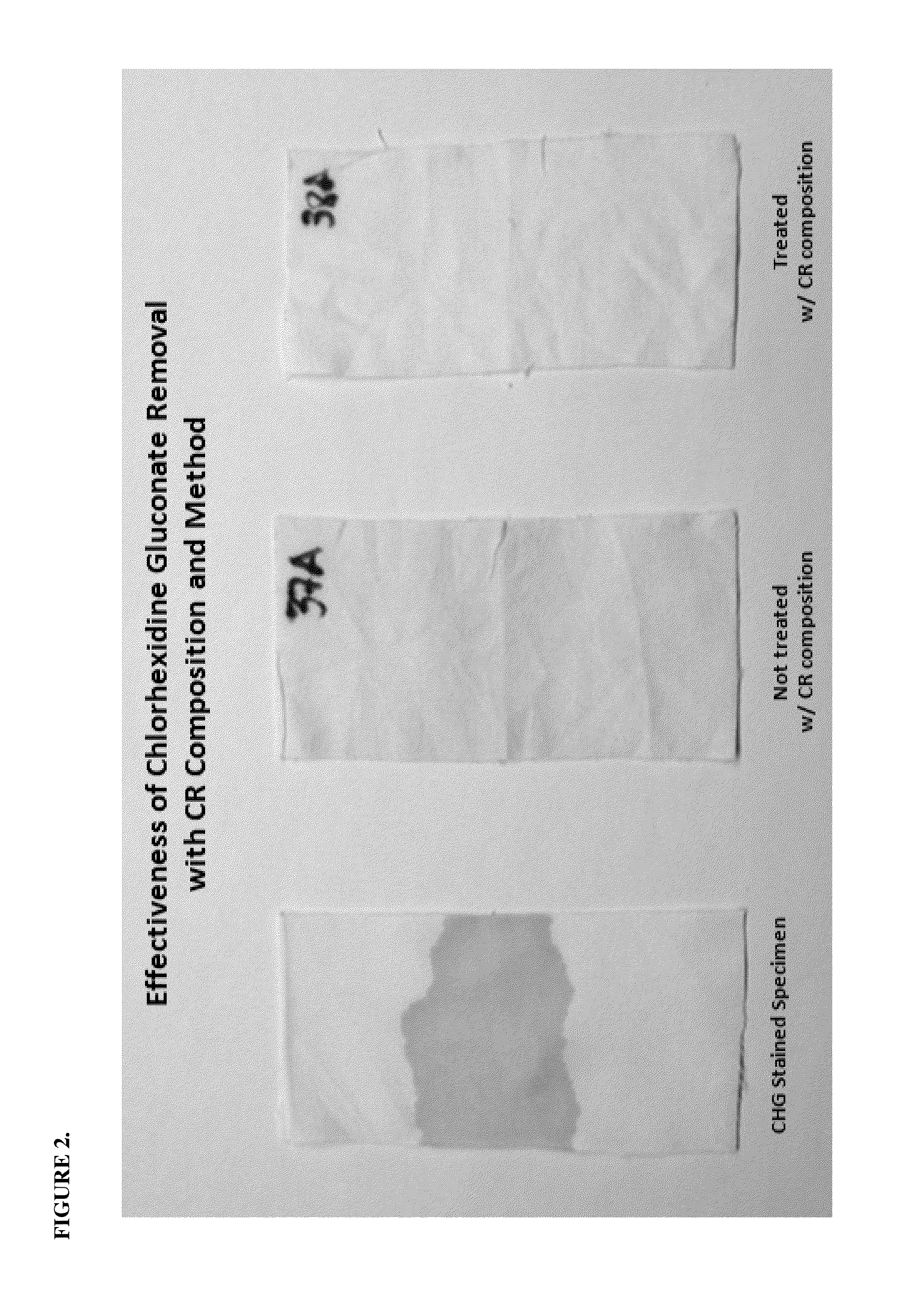Composition and method for removing stains derived from chlorhexidine gluconate
- Summary
- Abstract
- Description
- Claims
- Application Information
AI Technical Summary
Benefits of technology
Problems solved by technology
Method used
Image
Examples
example 1
Method for CHG Removal
[0065]The purpose of this method is to evaluate the effectiveness of acid / surfactant solutions on CHG stain removal and to establish the most effective removal composition and optimum treatment conditions (i.e. pH, temperature, time).
[0066]This test method closely follows AATCC Test Method 61-2008 Colorfastness to Laundering: Accelerated for the assessment of color changes and staining after laundering. Test swatches were stained with CHG, allowed to age, and then laundered with an acid / surfactant solution. Immersion of the swatches in a chlorine bleach bath was followed to verify thorough removal of the CHG stain. If the pink stained area turns brown, or the sample develops a light brown hue throughout, the wash solution is not effective. Swatches are examined for both the removal of pink stain and measured for the whiteness after chlorine exposure.
[0067]The equipment used in this test method included an Atlas Launder-ometer® AATCC Standard Instrument, which i...
example 2
Acid Screen
[0086]Twelve acids have been tested for use as part of the CR composition: Hydrofluorosilicic, Phosphoric, Citric, Sulfuric, Formic, Oxalic, Hydrochloric, Acetic, Gluconic, Glycolic, Succinic, and Malic acids. Previously, hydrofluorosilicic, phosphoric, and citric acids were compared at a pH of 2.0 over a temperature range of 80° F. to 145° F. and at 2 minute and 10 minute cycle times. These tests verified phosphoric acid to be an effective acid at temperatures as low as 80° F. and at short 2 minute cycle times.
[0087]The acids that remained to be tested were run at 145° F. with a 10 minute cycle time under the following conditions (Table 1):
TABLE 1TestSurfactant Used% SurfactantTarget pH20Nonylphenol0.01%2.0Ethoxylate w / 6-15 EOunits21Nonylphenol0.01%3.0Ethoxylate w / 6-15 EOunits22Nonylphenol0.02%3.0Ethoxylate w / 6-15 EOunits23LAE (C12-C15 w / 5-120.01%2.0EO units)24LAE (C12-C15 w / 5-120.01%3.0EO units)26LAE (C12-C15 w / 5-121.00%3.0EO units)
[0088]It was established from these te...
example 3
Acid Combination Testing
[0093]The following combinations of acids were prepared and used to bring the pH of the surfactant and water solution to approximately 2.5. The solutions were made with 0.2 g of LAE (C12-C15 with between 5 and 12 EO units) into 1000 g deionized water, and the samples were run at 145° F. (62.7° C.) for ten minute cycles. Results are shown in Table 3.
TABLE 3AcidQuantity*per1000 gdeionizedWI-ΔWI-SampleMixture #3:1 RatiopHwaterCIECIE30ANoneNo acid5.21n / a34.6774.8431AControlOnly H3PO42.490.50 g94.9414.5730B1H3PO4:HFS2.501.00 g96.1713.3430C2H3PO4:Citric2.491.11 g97.0612.4531B7H3PO4:Sulfuric2.500.50 g91.3618.1530D3HFS:H3PO42.501.33 g96.4413.0730E4HFS:Citric2.501.75 g94.5914.9231D9HFS:Sulfuric2.501.11 g92.2417.2730F5Citric:H3PO42.502.34 g98.3511.1630G6Citric:HFS2.514.52 g97.4812.0331C8Citric:Sulfuric2.513.04 g94.8914.6231E10Sulfuric:H3PO42.501.06 g93.1616.3531F11Sulfuric:Citric2.503.28 g96.4113.1031G12Sulfuric:HFS2.492.27 g95.4614.05
[0094]Based on the results shown i...
PUM
 Login to View More
Login to View More Abstract
Description
Claims
Application Information
 Login to View More
Login to View More - R&D
- Intellectual Property
- Life Sciences
- Materials
- Tech Scout
- Unparalleled Data Quality
- Higher Quality Content
- 60% Fewer Hallucinations
Browse by: Latest US Patents, China's latest patents, Technical Efficacy Thesaurus, Application Domain, Technology Topic, Popular Technical Reports.
© 2025 PatSnap. All rights reserved.Legal|Privacy policy|Modern Slavery Act Transparency Statement|Sitemap|About US| Contact US: help@patsnap.com



